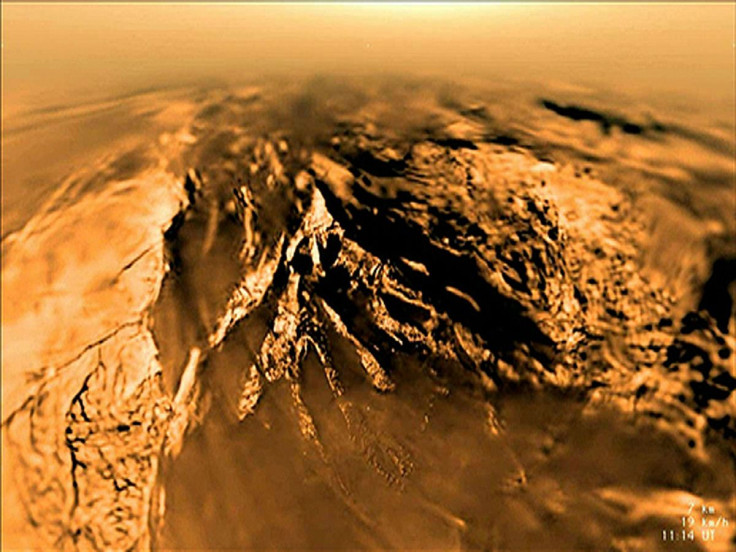Saturn’s Moon Titan Has Ingredients For Life, Albeit Of An Alien Kind, Scientists Say

Last year, researchers from Cornell University theorized the existence of life “not as we know it” on Saturn’s largest moon Titan. They posited that the moon’s frigid, liquid methane-soaked landscape could give rise to, and support, methane-based, oxygen-free cells that metabolize, reproduce and do everything else life on Earth does.
New research carried out by a separate team of researchers — led by Martin Rahm, a postdoctoral researcher in chemistry at Cornell University — further bolsters the case for existence of life, or at least conditions suitable for life to arise, on Titan.
“We are used to our own conditions here on Earth. Our scientific experience is at room temperature and ambient conditions. Titan is a completely different beast,” Rahm said in a statement released Tuesday. “This paper is a starting point, as we are looking for prebiotic chemistry in conditions other than Earth’s.”
Titan is the only other world known to us where lakes, rivers and waterfalls play a crucial role in shaping the surface. However, unlike those on Earth, these are made of methane and ethane — the presence of which, as mentioned earlier, has led scientists to speculate about the existence of non-water based life forms.
The new study, which uses data collected by NASA’s Cassini-Huygens mission, states since the moon most likely has significant quantities of hydrogen cyanide — a possible “prebiotic chemical key” produced when sunlight strikes Titan’s toxic atmosphere made of nitrogen and methane — it could very well have life on it. This is because hydrogen cyanide is an organic chemical that can react with itself and with other molecules to form long chains, or polymers — one of which is called polyimine. And since polyimine is flexible, it can absorb the sun’s energy and become a possible catalyst for life.
“Polyimine can exist as different structures, and they may be able to accomplish remarkable things at low temperatures, especially under Titan’s conditions,” Rahm said. “If future observations could show there is prebiotic chemistry in a place like Titan, it would be a major breakthrough. This paper is indicating that prerequisites for processes leading to a different kind of life could exist on Titan, but this only the first step.”
Although NASA has unveiled tentative plans to design and send a submarine to investigate Titan’s hydrocarbon seas — especially the gigantic Kraken Mare — it would be years before these plans materialize. Until then, scientists hope that the data still being gathered by the Cassini mission would continue to provide invaluable insights into the kind of aliens that may be lurking on Saturn’s moon.
© Copyright IBTimes 2024. All rights reserved.





















